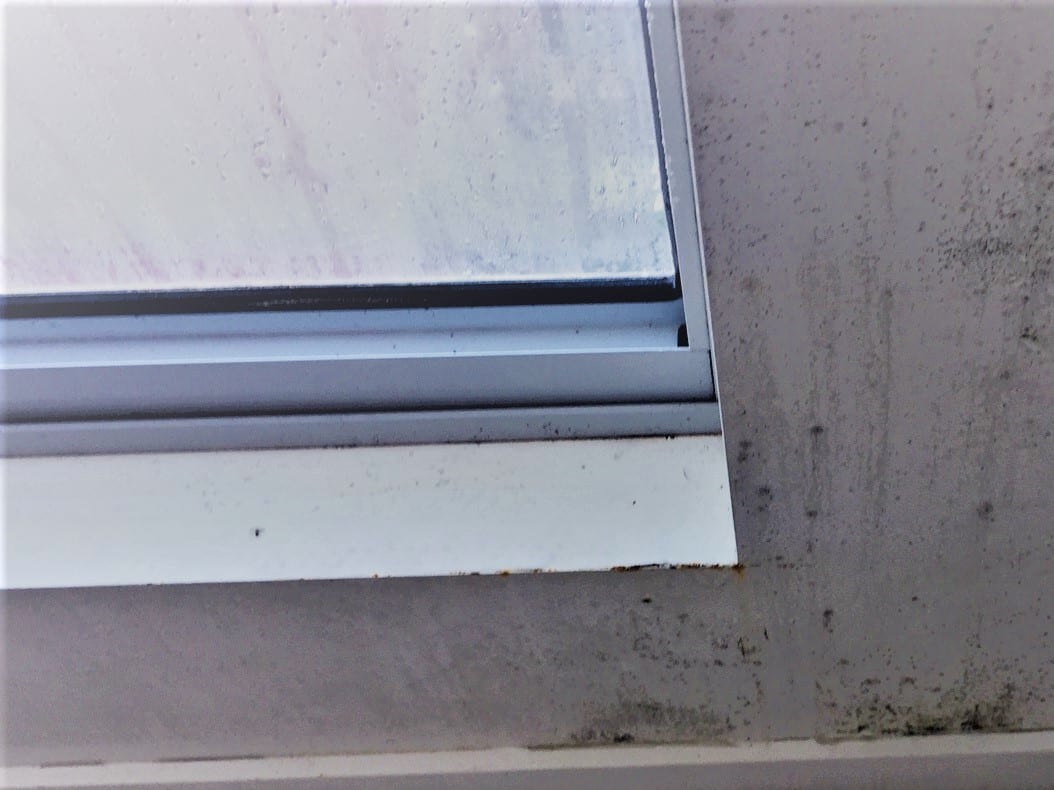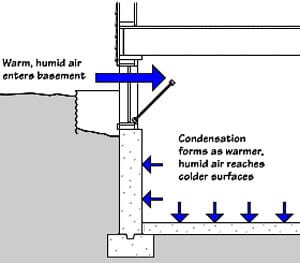
18 Jun Condensation on walls and windows
Condensation on walls in winter – why it happens and how to fix it
Condensation problems within a building are usually indicative of humidity and ventilation problems within a property. It is often believed to be caused by building defect, but that is usually not the case. Buildings with inadequate ventilation leave the moisture trapped inside the building, which leads to condensation problems growing quickly.
Condensation is caused when warm air with vapour (damp) comes into contact with cold surfaces like a wall or a window. Condensation is possibly the most common form of dampness in buildings as a result of inadequate ventilation. If left untreated condensation damp can lead to mould and damage to your home. The effect of condensation is intensified in the colder winter months.
Often, condensation occurs at low levels where the surface of the wall is coolest, starting in a corner and then spreading along the length of the wall. This may visually appear to be rising damp and can easily be confused.
Condensation is caused by excess water vapour in the air, which can’t escape. As well as a lack of ventilation, condensation can be caused by poor insulation or inadequate heating in the home.

Image: Condensation forming on internal walls.
Warm air carries water vapour with it – the warmer the air, the higher the moisture load it is able to support. On contact with cooler surfaces, the moisture in the air condenses to form dampness or water droplets. This can sometimes be mistaken for wall leakage, when in fact the accumulated moisture is from condensation.
Condensation is most likely to occur on the glass in windows, colder parts of walls, around external door and window openings, or where floors or ceilings join with outer walls.
Condensation can also be present in areas where the natural air circulation is reduced or restricted, this is often at the side of or behind furniture that is stood against an outside wall – or inside cupboards. Damp will begin to damage the area affected and patches of black mould growth can appear.
Most buildings will suffer from some condensation especially if you dry clothes inside or use humidifiers. Cooking, showering and bathing produce a higher level of moisture in the air because the warmer the air, the more moisture it will contain. When this warm and moisture loaded air come in touch with surfaces that are cooler, such as windows, cool walls or metal, the air temperature drops and the water vapour condenses into water droplets.
Common signs of condensation are
- Damp walls with blistering paint
- Damp windows
- Droplets on the surface
- Damaged and peeling wallpaper
- Musty smell
- Black mould growth along the edges of windows, skirting boards and wall to floor and wall to ceiling joints.
- If the dampness has a tide mark on the wall, the dampness may be caused by rising damp or penetrating damp, leaking pipes or faulty roof.
Treating condensation
If the cause of the damp has been identified as condensation, the cure may be as simple as installing a good quality ventilation system that encourages the movement of the air from the inside if the building to the outside. Control the relative humidity in the building through the use of extractor fans in kitchens and bathrooms during and after cooking and bathing.
Ensure that there is adequate ventilation. Cross-ventilate if possible. Trickle ventilation in windows works well in reducing the problems associated with poor ventilation, such as condensation. A trickle vent is a small slot/opening in a window or building envelope component, that allows small amounts of ventilation through a window and/or door when it is closed.
Wherever installation of a ventilation system is not feasible, using a dehumidifier together with a fan will help control the humidity level in the affected room.
Are you interested in finding out more about the various remedial building services we are providing?
Please click on the image below to download Waterstop Solutions Capability Statement
Waterstop Solutions Capability Statement is now available to download as PDF. (The image is clickable and opens up a link to our Capability Statement).
Good maintenance begins with a proactive approach to maintain, keep, preserve and protect a building.
Remember that seepage/water ingress into areas such as balconies, basements, concrete roofs, car parks and retaining walls, should not be ignored – call a remedial waterproofing professional today for an assessment to provide you with the best solution for your situation.
At Waterstop Solutions, we carry out a wide range of remedial works to concrete structures post construction stage in Brisbane, Gold Coast, Sunshine Coast, Sydney and outlying areas in Queensland and New South Wales.
Equipped with major civil works experience, we can quickly determine the best approach to rectify all seepage and concrete deterioration issues.


